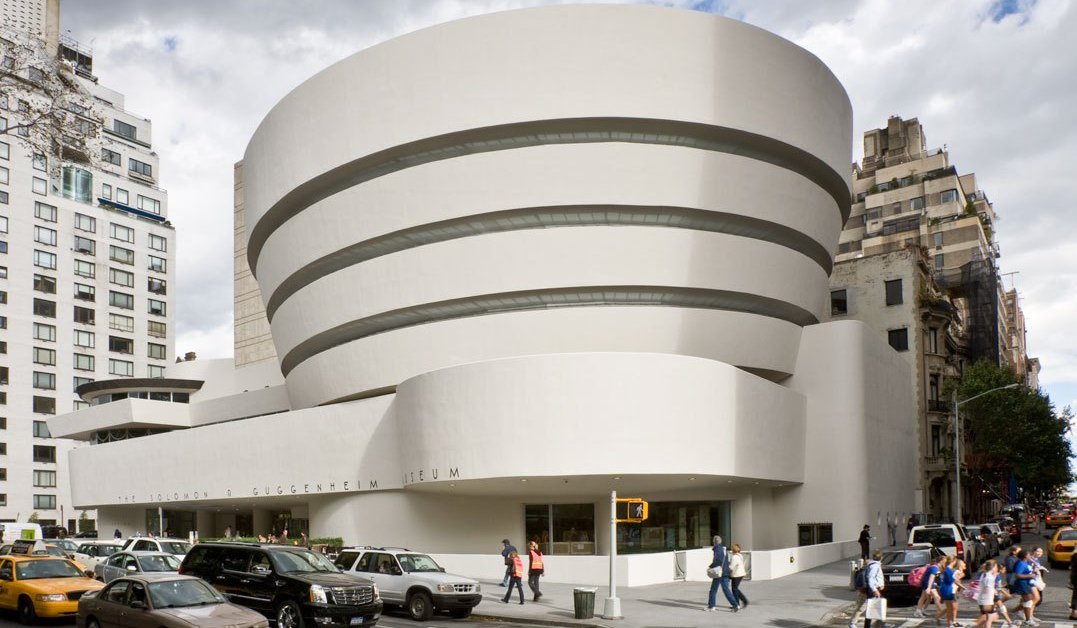Top Great Architectures That Get Amazing Inspiration From Math
Anil - Aug 09, 2019

Here're the best mathematically interesting architectures in the world, in the quest of searching the artistic aspect of math.
- Murderer Taught Himself Higher Math In Prison And Solved A Age-Old Math Problem
- This Magical Number Will Help You Find A Parking Space, The Perfect Apartment, And Even A Suitable Spouse
- Can You Answer This Simple Math Problem That Has Tricked Einstein?
Math has its slice in every part of your life. Today, we're gonna find out some of the best mathematically interesting architectures in the world, in the quest of searching the artistic aspect of math and how it has inspired our architects' mind.
1) The Great Pyramid of Giza (Egypt)

Location: Cairo, Egypt
The Great Pyramid of Giza always appears at first place in the list of Seven Wonders of the Ancient World. Among three pyramids in the Giza pyramid complex, the Great Pyramid of Giza holds the largest and oldest titles, adding that it had been the tallest structure in human history for nearly 4,000 years. Most of us may know those facts, but a few are aware that its architecture contains plenty of math.
For example, its perimeter was recorded at 365,24 cubits (a unit of length in history), which is the same as the number of days in one year. Besides, when you take twice its height to divide its perimeter, you'll get the number pi (3.1416). Furthermore, the Pythagorean triangle (3, 4, 5) was found in the measurements of King's Chamber.
2) Parthenon (Greece)

Location: Athens, Greece
The Parthenon was initially constructed in around 430s BC with the ideal of harmony in the Ancient Greek, reflecting it through the perfect proportions. The 9:4 ratio of the width to height claims the notable proportions of the temple alongside other relationships between things, such as spacing between the columns.
It's worth mentioning that the Parthenon's proportions are based on the Golden Ratio (~1:1.618). Surprisingly, the Ancient Greeks knew that if the columns made completely straight would look thinner in the middle, then they made them slightly thicker instead.
3) Taj Mahal (India)

Location: Agra, India
Many travelers have wished to have a chance to visit the Taj Mahal as well as taking a photo with the iconic architecture of India. Without a doubt, it sits firmly at the top of the most well-known tourist destinations thanks for the charming beauty of the building. For those who've taken a look closer on it, you would be amazed at the line symmetry design as the Taj Mahal delivers a great example.
4) Sagrada Familia (Spain)

Location: Barcelona, Spain
Located in Barcelona, the famous basilica Sagrada Familia was initially designed by Antoni Gaudi, and it still has been constructed till now. Despite that, the Sagrada Familia always attracts tourists all over the world. Gaudi used plenty of math into his masterpiece, such as a quadric surface called hyperbolic paraboloid structures, representing the equation z = x2/a2 - y2/b2. Also being seen in specific "façades," a special arrangement called Magic Square shows the Magic Constant, collecting the same sum in all rows, columns, and diagonals. In the case of Sagrada Familia, the constant sum is 33.
5) Guggenheim Museum (Spain)

Location: Bilbao, Spain
Here we shall pay another visit to Spain to discover a math-inspired architecture once more times. Paying a visit to the Guggenheim Museum in Bilbao will let you see one of the most important buildings constructed in the 20th century. Since the celebration in 1997, many people have been charmed with the exclusive architecture of the museum, which mimics a ship with titanium panels. Though it looks like a random arrangement, the museum is based on CATIA - Computer Aided Three Dimensional Interactive. As of now, computer simulation can make such shapes possible in reality, which architects could have only imagined in the past.
6) The Gherkin (UK)

Location: London, UK
The 30 St Mary Axe, better known as The Gherkin, is a distinctive architecture located in London. It has gained its reputations with the use of computer modeling in the math of turbulence. The Gherkin skyscraper was built with the help of CAD (Computer-Aided Design) as well as parametric modeling.
Featured Stories

Features - Dec 18, 2024
6 Cutting-Edge Features of Galaxy AI & Lineup of Supported Samsung Smartphones

Features - Jan 23, 2024
5 Apps Every Creative Artist Should Know About

Features - Jan 22, 2024
Bet365 India Review - Choosing the Right Platform for Online Betting

Features - Aug 15, 2023
Online Casinos as a Business Opportunity in India

Features - Aug 03, 2023
The Impact of Social Media on Online Sports Betting

Features - Jul 10, 2023
5 Most Richest Esports Players of All Time

Features - Jun 07, 2023
Is it safe to use a debit card for online gambling?

Features - May 20, 2023
Everything You Need to Know About the Wisconsin Car Bill of Sale

Features - Apr 27, 2023
How to Take Advantage of Guarantee Cashback in Online Bets

Features - Mar 08, 2023
Comments
Sort by Newest | Popular